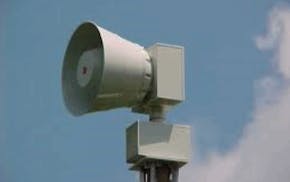Thupten Dadak has spent the past three decades preserving and celebrating Tibetan culture in Minnesota. And a new exhibit at the Hennepin History Museum is latest of his efforts.
Through artifacts and displays, "Faraway Home: Tibetans in Minnesota," which opened July 7 and runs through spring 2024, chronicles the arrival of the state's first 160 Tibetan refugees and the myriad ways the community has maintained their culture since 1992.
The Tibetan American Foundation of Minnesota estimated there were about 3,500 people of Tibetan descent living in the state as of 2019, the second-largest settlement in the nation. Dadake believes that number is closer to 5,000 today. The exhibit is yet another way to strengthen the ties young Tibetans have to their culture, Dadak said.
"This will be a benefit to the younger generations who grow up and can say, 'This is my history,' " said Dadak, who was appointed by the U.S. representative for the Dalai Lama to help settle Tibetans in Minnesota.
The exhibit will feature local Tibetan photography, including stills of the Dalai Lama's many visits to the Twin Cities over the years. Launch events included a traditional Tibetan dance performance and the creation of a mandala — an intricate geometric piece of art — by Buddhist monks from India.
The museum exhibit is partly an extension of a play about the Dalai Lama that wrapped its final show at Washburn Fair Oaks Park on Sunday. As Markell Kiefer planned to put on her production of "The Buddha Prince" in the greenspace across the street, museum officials and local Tibetan leaders began discussing how to further celebrate the community.
"It was a great piece of serendipity," said John Crippen, the museum's executive director.
Museum officials have spent the past five years looking for ways to shine a light on marginalized groups across the state. In 2018, the "Owning Up" exhibit explored redlining and other ways state and city governments discriminated against Black Minnesotans.
Patrons also flocked to a subsequent exhibit that detailed the displacement of communities of color across the Twin Cities by the construction of Interstate 35W.
"This is the kind of history that really resonates with people," Crippen said.
The Tibetan exhibit is more celebratory in nature. Crippen said he hopes the displays push museum patrons to "learn about some of their neighbors they weren't aware of and learn about that inspiring story."
Local Tibetan leaders say the exhibit aligns with their larger cultural preservation efforts. The Tibetan American Foundation of Minnesota, which Dadak founded, has long hosted a college prep tutoring program called Lâmtön and other enrichment opportunities for the community's youth.
The organization also established a cultural school in 1997, which focuses on Tibetan language, history and religion.
"It's important for us to preserve our language, especially, because when you've lost your language, you've lost your identity," Dadak said.
Tenzin Nordon, who immigrated to the U.S. from India when she was 8, is a Lâmtön board member who spent her formative years in Minnesota forging connections with her Tibetan heritage. Her parents emphasized the importance of learning the language and customs.
Nordon realized the importance of not only sharing Tibetan culture with members of younger generations but allowing them to define their own relationship with the heritage.
"What will, in the end, connect this diasporic community?" she said. "In the end, it's being Tibetan. And we all have to figure out what that means for ourselves."
The Dalai Lama also plays a major role in the cultural identity of Tibetans across the globe. About 1,200 people of Tibetan descent gathered last week in Isanti, Minn., where the Tibetan American Foundation of Minnesota has a cultural center, to celebrate the 88th birthday of their spiritual and cultural leader. Some traveled from Wisconsin and Illinois, which Dadak and Nordon say is a testament to the loyalty members of the Tibetan diaspora feel for the Dalai Lama.
"Tibetans would not be here without the leadership of his holiness," Nordon said.
Visit the museum
"Faraway Home: Tibetans in Minnesota" is at the Hennepin History Museum, 2303 3rd Av. S. in Minneapolis, through spring 2024. The museum is open 10 a.m. to 3 p.m. Thursdays and Fridays and 10 a.m. to 5 p.m. Saturdays.

Lakewood Cemetery in Minneapolis opens new Welcome Center
![The Minneapolis City skyline including City Hall seen from the back of the U.S. District Court. ] GLEN STUBBE • glen.stubbe@startribune.com Mon](https://arc.stimg.co/startribunemedia/J6LWXC46FXN45KTZZGKPP4WGX4.jpg?h=91&w=145&fit=crop&bg=999&crop=faces)
Lawsuit asks judge to appoint special master to oversee city of Minneapolis violence prevention office

FBI agent reveals how the agency's massive fraud investigation began in Feeding Our Future trial

U of M's interim president meets with pro-Palestinian protest organizers

